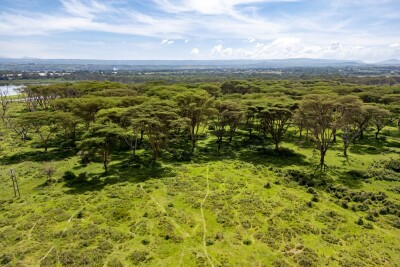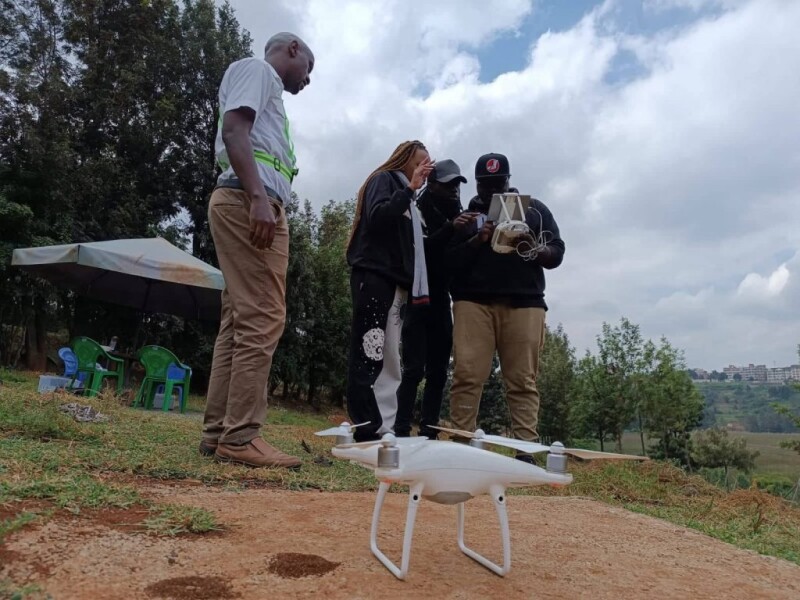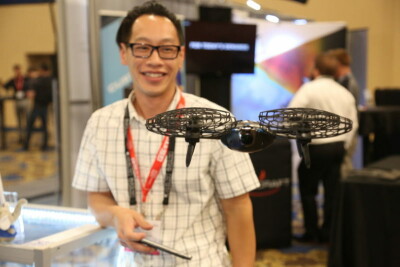Growing up, I was passionate about aviation. My interest was specifically in flying crewed aircraft, but when I realized how expensive it was to become a pilot, I quickly pivoted to other careers and planned to get back to it when I had enough resources. I ended up majoring in Geography (GIS and Remote Sensing) for my Bachelor's, and that's when I started freelance writing to support myself while in school.
While I did work in several niches, I came across clients who needed content for their drone-related blogs. I immediately fell in love with the industry since it brought me closer to flying something. I enjoyed – and still do – researching and writing about drone technology and its applications. After doing it for a couple of years, I figured, since I already wrote about them, why not start flying them too? That's how I ultimately became a licensed drone pilot and began flying drones professionally, combining my experiences into my writing.
I needed a Remote Pilot License (RPL) from the Kenya Civil Aviation Authority (KCAA) to fly commercially in the country. Today, I will share my journey to becoming a UAV licensed pilot in Kenya, the challenges, opportunities, and some of the current use cases of drone technology in Kenya.
Finding the Right Training School
I got my RPL in 2022. At the time, drone regulations in Kenya on licensing and operations were about two years old. Nonetheless, once a regulatory framework was created, a few companies opened up training schools and drone companies, providing a few options from which I could choose. When looking for a training school, I considered the following:
Accreditation - Training schools, or Unmanned Training Organizations (UTOs), in Kenya must be accredited by the KCAA. This process ensures that the training ground and instructors are fit to train. Once approved, the KCAA lists them on its website.
Course structure - At that time, I had not decided whether I wanted to use drones for mapping, photography, or spraying. I was only looking for a school that would teach about drones and aviation in general and give me adequate practical flying practice.
Location and cost - Since I had to balance the training with my work, I had to look for a school that was affordable and close to where I lived. Most of the drone schools in Kenya are located around the capital city, Nairobi.
Reputation - I reached out to a few friends who had become licensed and asked where they did their training. I also checked online for customer reviews on the training style and course structure.
After much consideration, I settled for a training school that was close to where I lived, affordable, and offered enough theory and practical training.
The Training Process
The training was not as intense as I thought it would be, considering how much we have to pay for it (more on this later). That said, I did gain enough skills to help me start a career in flying drones.

Theory Training
Before flying the drone, students need to first go through Ground or Theory training and pass the exam. This training includes subjects such as:
Airspace regulations - This teaches the student the various drone regulations in Kenya, such as where one can and can't fly a drone, how to apply for approval to fly a drone in Kenya, etc.
Meteorology - Here, students learn about the various aspects of weather and how they can affect UAV performance.
Principles of flight - This subject introduces students to UAVs, their components, and how they all work.
Human factors and decision-making - Students are taught good airmanship by learning about cognitive biases and how they affect UAV operations.
Safety and emergency protocols - This subject teaches the pilot the best practices for handling emergencies such as crashes, flyaways, accidents, dealing with crewed aircraft, and anything else one may encounter when out in the field.
Practical Training
After passing the theory exam, it was time to do what I had been looking forward to: flying the actual drone.
Flight preparation - At this stage, we were taught how to prepare for flight, including risk assessment of the flying areas, inspecting the drone to ensure its safety for flight, and creating a checklist to use before and after flight. We also applied for flight plans to prepare us for actual drone operations where we may have to fly in controlled airspace.
Hands-on flying - We were not taken through any simulator training and went directly to flying the actual drone, though some training schools are now taking students through simulators first. Luckily, I had some practice on simulators like DRL. Still, simulator flying doesn't come close to the thrill of seeing a real drone fly. They taught us maneuvers, what the controller does, and the various flight modes (GPS, ATTI Mode, RTH, etc.).
Emergency procedures - At this point, they taught us what to do in case there are birds or crewed aircraft or when there is an emergency and the drone is too far away.
VLOS operations -The training was on visual line of sight flights, in which we must always keep the drone within sight or use an observer in case it flies too far. BVLOS (Beyond Visual Line of Sight) operations are now gaining popularity but require more training and licensing.
The Certification Process
Once the instructor is convinced the student is ready to fly, they get to take the exam. A KCAA representative is invited to gauge the student’s knowledge about drone operations, how they operate the drone, and their reactions during an emergency. After training for two weeks, I was ready for the exam, which only takes a few hours. To get certified, we also need to take an Aviation Class 3 Medical evaluation to ensure we are fit to fly. And once everything was in order, I was ready to start flying drones professionally in Kenya.
Challenges of Getting a UAV License in Kenya
As mentioned earlier, the drone industry in Kenya is fairly new, but it has seen positive growth in the past few years. Still, some challenges remain for people aspiring to join the industry.
Cost
Training costs are a significant barrier to entering the drone industry in Kenya. Most schools charge $1000 or more for the basic training and much more if the student wants to get trained in a specific course, such as photogrammetry or agricultural spraying. Unlike places like the United States or Canada, where there is a much cheaper online self-learning option, students in Kenya have to go through an approved school that determines the cost of the training.
Lack of Awareness
There is a lack of adequate information online on licensing and drone operations in Kenya. As a result, some people operate drones illegally because they don’t know the process of getting licensed. There is also a lack of awareness of the current progress in the Kenyan drone industry limiting the number of people joining the industry right now.
Limited Number of Training Schools
There are currently 12 drone training schools in Kenya, most of which are located in major cities like Nairobi. The cost of the license and the lack of an online self-learning option make it difficult for people in different cities to access the training.
Difficulty in Finding Drone-Related Jobs After Training
While the drone industry is growing, finding companies hiring drone pilots is sometimes a challenge. There is also a lack of a structured career path for drone pilots, especially those with no extra educational background to back the career. For instance, surveyors can choose a path in drone mapping, agricultural professionals can choose a career in drones for precision agriculture, and so on.

What Are Drones Being Used For in Kenya
After getting my drone license, I have had the chance to use drones for mapping, filming, surveillance, and agricultural spraying. Below are some top use cases for those who would like to work as drone pilots in Kenya or break into the market as a drone company.
Surveying and Mapping
The AEC industry in Kenya has picked up on using drones for mapping to create 2D and 3D maps, document construction progress, generate digital twins, and integrate into BIM software. This is thanks to their accessibility, ease of use, and increasing accuracy. The drones being used range from camera drones like the Mavics to more advanced multirotor drones like the DJI M300 and M350 RTK or Wingtra, SenseFly, and DeltaQuad for fixed-wing or VTOL drones.
Filming
Like in most parts of the world, capturing aerial shots with drones is quite common in Kenya. From event coverage to documentaries to movie creation, drone use is allowed to capture these moments as long as the user follows the right channels.
Precision Agriculture
UAVs have seen increasing adoption in Kenya’s agricultural sector for both large- and small-scale farming. High-resolution and multispectral drones are being used to collect data for plant counting and yield estimation, stress detection, and invasive species detection. Larger drones like the DJI Agras series and XAG drones are quite effective in applying fertilizer and pesticides on these farms, too.
Drone Delivery
Companies like Zipline have been delivering medical supplies in rural areas in Kenya since 2022, helping set up a framework for approving BVLOS and drone delivery operations in Kenya. This has also allowed more companies to trial drone delivery in Kenya.
Surveillance and Monitoring
Both government and private stakeholders are using drones for surveillance and monitoring of high-value assets, supporting ground teams, and threat detection. Drones fit in this setup because they can cover more ground, relay information in real-time, and gather data without risking the personnel's lives. One of the most recent projects is where WildDrone used drones to monitor animal behavior without disturbing them. Drones have also been used to detect and prevent poaching in national reserves and conservancies.
Forestry
Drones are being used in Kenya for forest mapping, carbon credit estimation, and reafforestation by dropping seed balls and detecting invasive species. As a result, they hold great potential in helping the country increase its forest cover in the wake of increasing deforestation rates.
Cellular Connectivity
AALTO recently tested its Zephyr drone by flying it in the stratosphere with a direct-to-device 4G/5G payload. This is meant to improve connectivity in rural areas where getting service can be challenging.
Is Getting the UAV License in Kenya Worth it?
Getting a drone license was worth it for me. It opened up more opportunities for me as a writer and a drone pilot. It is a growing industry with more room for skilled pilots who have aligned their skills with the industry they want to join. Whether it's surveying, agriculture, or security, getting the extra training or licensing in addition to the drone license can make a difference.







